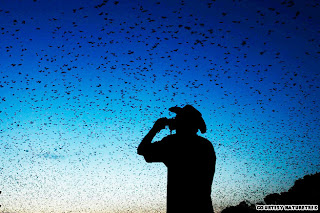Some information on Kasanka National Park, my soon-to-be home for the next year!
"Kasanka is Zambia’s first national park under private management and is entirely reliant on tourism revenue and charitable funding. It is a valuable conservation area with diverse flora and fauna including many endangered species and exceptional birdlife" - from Kasanka Trust Ltd.
Kasanka Baboon Project is located in Kasanka National Park in Central Zambia approximately 500km from the capital Lusaka. It is one of Zambia's smallest National Parks at just 390 sq. kilometres. Despite this however, there is an abundance of wildlife species (including endangered species) as well as habitats.
 |
| Screenshot of Google Maps showing the position of Kasanka National Park in Zambia (the red "A"). |
 |
| The view from Fibwe Hide (Photo from here) |
Kinda Camp, where the project is based within the Park, is situated near to Fibwe Hide. Fibwe Hide is renowned for viewing Sitatunga (Tragelaphus spekii), a reclusive swamp-dwelling antelope, which are quite numerous in the park.
It gives panoramic views of the Kapabi swamp due to the Hide being situated 18 metres up a Mululu (Africa Mahogany) Tree.
 |
| Fibwe Hide situated 18 metres up a Mululu Tree! (Photo from here) |
 |
| Bat migration in Kasanka including up to 5 million bats! (Photo from here) |
Kasanka also sees an annual congregation of up to 5 million Straw-coloured fruit bats (Eidolon helvum) from throughout Africa each November. They pack themselves into just one hectare! More on it here.
I can't wait to see this spectacle!!
108 mammal species have been recorded in the Park including elephants, hippos, puku, buffalo, Sable antelope, warthogs, leopards, side-striped jackals, caracals, servals, honey badgers, vervet monkeys, blue monkeys and of course Kinda baboons! There are also over 450 species of birds recorded in the Park.
I know some people despise Wikipedia, but the page on Kasanka has some great information!






